Page content
Current Exhibitions
at the DeWitt Wallace Decorative Arts Museum
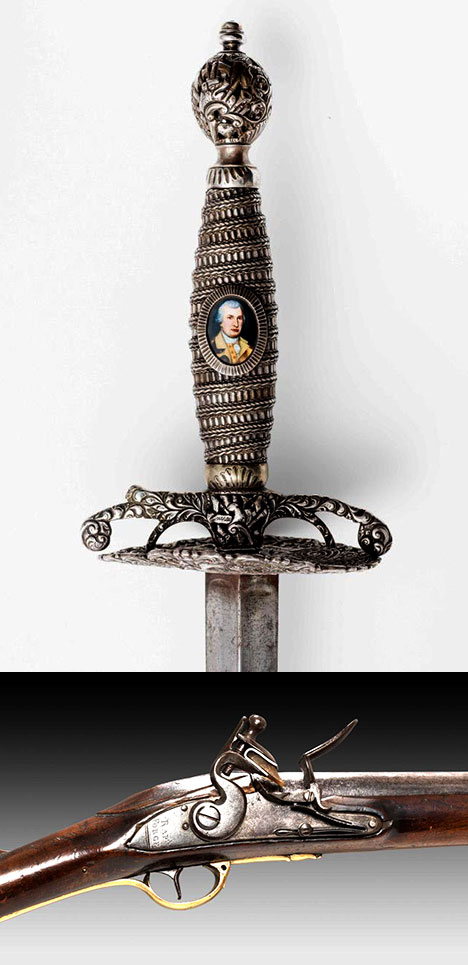
"To Arm against an Enemy": Weapons of the Revolution.
Colonial Williamsburg's extensive collection of military weaponry will illustrate the arming of American, British, French, and Hessian troops during the War for Independence. During the first half of the 18th century, firearms in the colonies were a mix of the obsolete, the old and the odd. Most were privately owned and better suited for shooting game, while others were outdated relics captured in earlier military conflicts. With the outbreak of the French and Indian War in the 1750s, thousands of British and French soldiers came to North America, providing the first large-scale influx of up-to-date military weaponry into the colonies. A fresh wave of cutting-edge weapons accompanied the Revolution. This international jumble of muskets, swords and bayonets armed soldiers on both sides of the conflict.
Set in the Zadarlik-Sogoloff Gallery, the exhibition has been generously funded by the Pritzker Military Foundation.
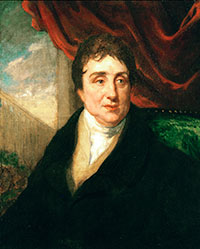
Artists on the Move: Portraits for a New Nation
In today’s world it is hard to imagine a time when posing for the camera was not an option. Americans over 200 years ago were no less interested in having their picture made, but it required more work. Yet as America explored its freedom and adjusted to its status as a new nation, people wanted to express themselves and artists were there to help them out.
Some artists settled in cities, but many traveled to meet their customers’ needs. As Americans moved west and south, artists followed. Like their clients, the artists were themselves Americans looking for their own opportunities. Some traveled to train with well-known painters while others figured it out as they went along. For the most part, their clients sought to record themselves and their families for posterity. Today these portraits give us our only chance to see fellow Americans from the past in full color.
If you could pick only one image to be remembered by, what would it be? On view are more than 30 portraits, some never before exhibited. Each portrait has a story to tell, whether it is the marriage of childhood sweethearts or an artist creating his own selfie. Discover a painting that was made for a President and one that was rescued from the trash.
This exhibition is made possible through the generosity of Juli and David Grainger and the Grainger Foundation.
In the Roberts Gallery
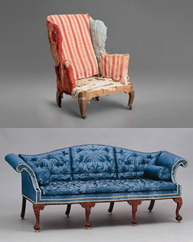
Upholstery CSI: Reading the Evidence
When most people look at furniture, they admire the craftsmanship of the cabinetmaker. But the look and function of seating furniture often hinged on the talent of another trade – that of the upholsterer. In Upholstery CSI: Reading the Evidence visitors will discover the secrets of the 18th-century upholstery trade. Beginning with a bare chair frame, the upholsterer layered webbing, linen, stuffing, and show fabric to create a fashionable piece. Unfortunately the 200-year-old fabrics rarely survive the passage of time and changing fashions.
Being able to read the evidence left behind to reconstruct the 18th-century appearance is the task of the modern-day curators and conservators. This exhibit explores the work of Colonial Williamsburg upholstery conservator Leroy Graves and the non-intrusive upholstery method he developed that is now used by museums worldwide. The goal of the Graves Approach is to restore a piece to its earliest appearance without marking or disturbing the frames or surviving upholstery.
The exhibit is made possible through the generosity of Don and Elaine Bogus and will be on view in the Wilkinson Gallery.
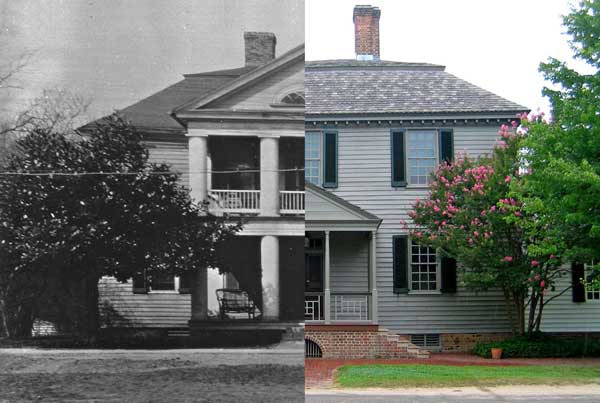
Architectural Clues to 18th-Century Williamsburg
Explore architectural elements from both surviving and demolished 18th- and early-19th-century buildings in the Historic Area. The pieces are part of the Colonial Williamsburg Foundation's architectural collection and provide an interesting and valuable research tool in studying the history of the built environment before, during, and after the Restoration of the Historic Area. Most recently, the collection helped with the reconstruction of Charlton's Coffeehouse and the Public Armoury, as well as informing paint color changes throughout the Historic Area.
This exhibition is made possible through the generosity of Don and Elaine Bogus.
Ongoing
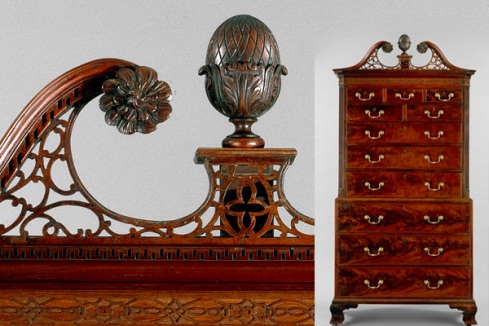
A Rich and Varied Culture:
The Material World of the Early SouthThis wide-ranging exhibition explores and celebrates the remarkable art and antiques that were created in or imported to the Chesapeake, the Carolina Lowcountry, and the Backcountry between 1670 and 1840. Produced in conjunction with two dozen partner institutions and private collectors, A Rich and Varied Culture highlights the aesthetic diversity brought to these three regions of the early South by the disparate cultural and ethnic traditions that ultimately defined a unique, early southern style. On view are some 350 examples of furniture, paintings, ceramics and glass, silver, jewelry, iron, firearms, costume, architectural elements, archaeological artifacts, and much more. Together these compelling artifacts beautifully represent early populations in Maryland, Virginia, West Virginia, the Carolinas, Georgia, Kentucky, Tennessee, and Louisiana. Many of the objects have never before been exhibited to the public.
The exhibition was made possible by Carolyn and Michael McNamara.
Ongoing exhibition in the Nancy N. and Colin G. Campbell Gallery.
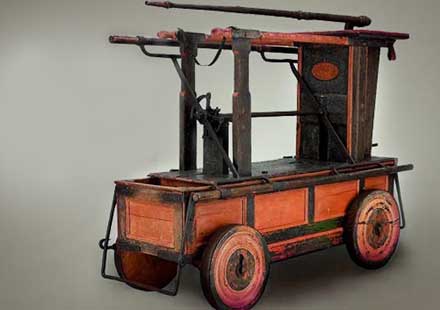
Richard Newsham’s Fire Engine
Resembling a tricked-out coffin on four wheels, Colonial Williamsburg’s original 18th-century fire engine is one flaming-hot antique! In fact, it is so important to early American history that it is part of a rare “stand alone” exhibit, and was reproduced not once – but twice --for actual use in the Historic Area. Richard Newsham’s Fire Engine uses the display of this magnificent machine to explore fire and early fire-fighting techniques.
Like modern ones, early engines were used to direct a stream of water at an out of control fire, which was a very big problem in an age when buildings, and their contents were highly flammable. Williamsburg, described as “our Wooden city” in 1721, remained relatively safe until 1747, when the Capitol Building burned. To prevent further tragedy, the colony wisely decided to invest in a proper “Fire Engine and Four Dozen of Leatheren Buckets for the use of the Capitol” in 1754. This patented engine, built in London by Richard Newsham’s firm around 1750, is known to have been the clear choice for anyone in England or America who was serious about combating fire.
This exhibition was made possible by a grant from the Ambrose and Ida Frederickson Foundation.
Related Programming:
Running of the Engine - In the 18th century, the responsibility of fighting fires rested with the public, so people practiced with and tested fire engines. Join the Military Programs staff and test your skill in helping to run the bucket brigade. Daily – weather permitting
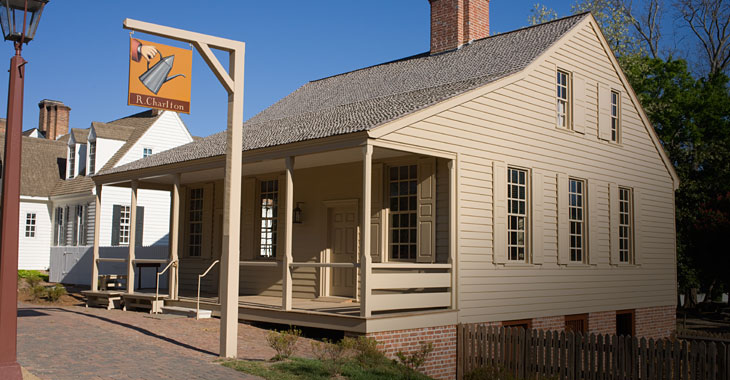
Rebuilding Charlton’s Coffeehouse
Colonial Williamsburg’s reconstruction of Charlton’s Coffeehouse is the first ground-up reconstruction along Duke of Gloucester Street in several decades. It involved the work of every department and trade in the Foundation. The exhibition explores how such a building could be so accurately constructed and furnished when seemingly very little was left of the original structure. It will use archaeological, architectural, archival, decorative arts and trades components to show visitors the process of rebuilding the history, structure, and interiors of the coffeehouse. Through video, graphics, original objects, and touchable reproductions, visitors learn firsthand what it took to bring the project to completion.
Ongoing exhibition
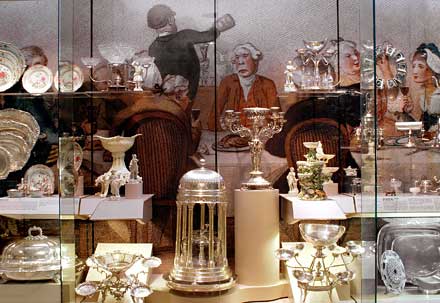
Revolution in Taste
For most Americans, choice is a part of everyday life we take for granted. We select clothing, household furnishings, and cars to fit our budgets, fill specific needs, and project an image of who we are. As the eighteenth century progressed, British citizens both at home and in the colonies increasingly had access to a world-wide trade in exotic, fashionable, and useful goods. Revolution in Taste explores the objects and evolving social customs that became part of daily life for the expanding middle and upper classes. Made of ceramic, glass, and metal, items like coffee cups, teaspoons, and dinner plates offered stylish and exciting new forms, improved materials, and dazzling colors. Elegant dining, tea drinking, and the consumption of alcoholic beverages became the focus of social life in early America, leading a revolution in taste that is still underway even today.
Ongoing exhibition in the Henry H. Weldon Gallery
Related programming
Ceramics Up-Close – offered Friday and Sunday afternoons. What sort of dishes did our colonial ancestors buy? Where did the ceramics come from and how were they used? Join the conversation on a guided tour.